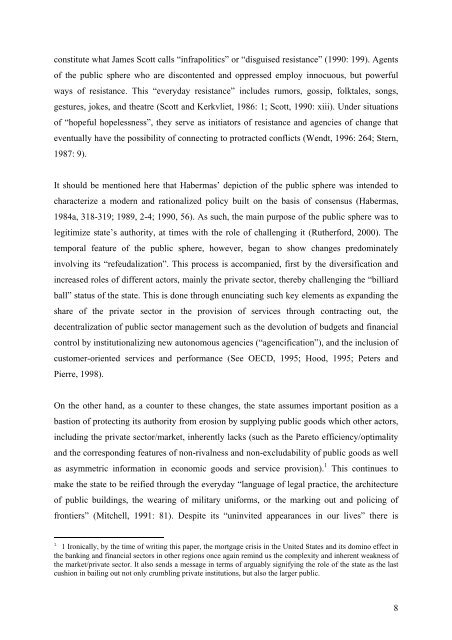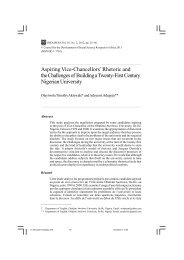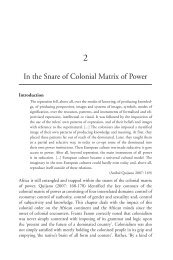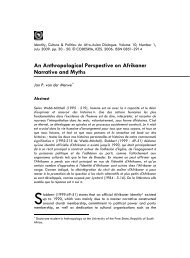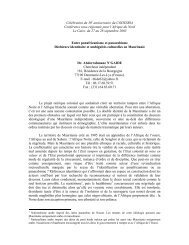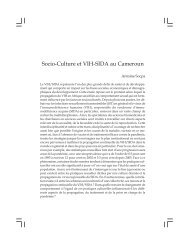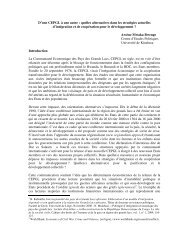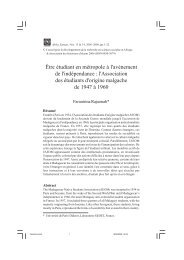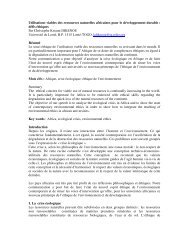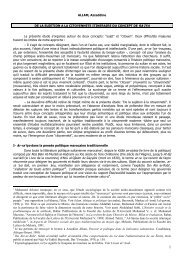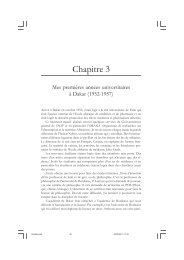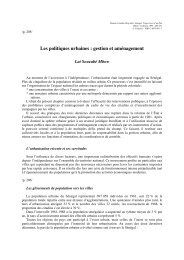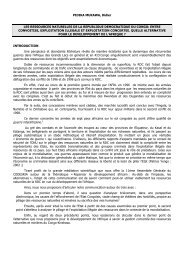Zenebe BASHAW - codesria
Zenebe BASHAW - codesria
Zenebe BASHAW - codesria
You also want an ePaper? Increase the reach of your titles
YUMPU automatically turns print PDFs into web optimized ePapers that Google loves.
constitute what James Scott calls “infrapolitics” or “disguised resistance” (1990: 199). Agents<br />
of the public sphere who are discontented and oppressed employ innocuous, but powerful<br />
ways of resistance. This “everyday resistance” includes rumors, gossip, folktales, songs,<br />
gestures, jokes, and theatre (Scott and Kerkvliet, 1986: 1; Scott, 1990: xiii). Under situations<br />
of “hopeful hopelessness”, they serve as initiators of resistance and agencies of change that<br />
eventually have the possibility of connecting to protracted conflicts (Wendt, 1996: 264; Stern,<br />
1987: 9).<br />
It should be mentioned here that Habermas’ depiction of the public sphere was intended to<br />
characterize a modern and rationalized policy built on the basis of consensus (Habermas,<br />
1984a, 318-319; 1989, 2-4; 1990, 56). As such, the main purpose of the public sphere was to<br />
legitimize state’s authority, at times with the role of challenging it (Rutherford, 2000). The<br />
temporal feature of the public sphere, however, began to show changes predominately<br />
involving its “refeudalization”. This process is accompanied, first by the diversification and<br />
increased roles of different actors, mainly the private sector, thereby challenging the “billiard<br />
ball” status of the state. This is done through enunciating such key elements as expanding the<br />
share of the private sector in the provision of services through contracting out, the<br />
decentralization of public sector management such as the devolution of budgets and financial<br />
control by institutionalizing new autonomous agencies (“agencification”), and the inclusion of<br />
customer-oriented services and performance (See OECD, 1995; Hood, 1995; Peters and<br />
Pierre, 1998).<br />
On the other hand, as a counter to these changes, the state assumes important position as a<br />
bastion of protecting its authority from erosion by supplying public goods which other actors,<br />
including the private sector/market, inherently lacks (such as the Pareto efficiency/optimality<br />
and the corresponding features of non-rivalness and non-excludability of public goods as well<br />
as asymmetric information in economic goods and service provision). 1 This continues to<br />
make the state to be reified through the everyday “language of legal practice, the architecture<br />
of public buildings, the wearing of military uniforms, or the marking out and policing of<br />
frontiers” (Mitchell, 1991: 81). Despite its “uninvited appearances in our lives” there is<br />
1 1 Ironically, by the time of writing this paper, the mortgage crisis in the United States and its domino effect in<br />
the banking and financial sectors in other regions once again remind us the complexity and inherent weakness of<br />
the market/private sector. It also sends a message in terms of arguably signifying the role of the state as the last<br />
cushion in bailing out not only crumbling private institutions, but also the larger public.<br />
8


